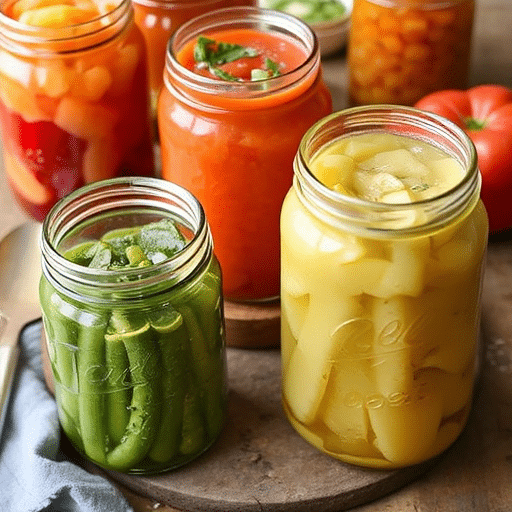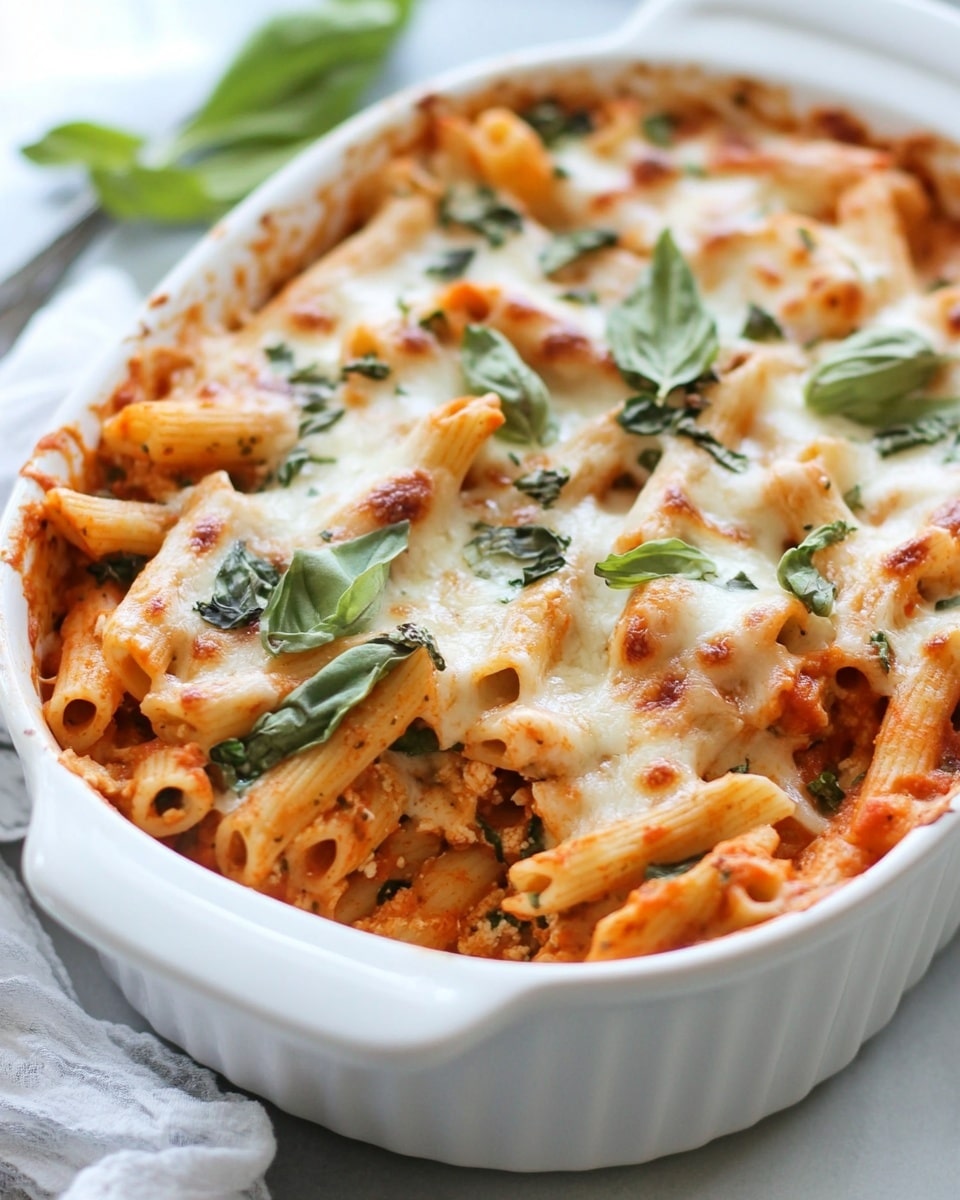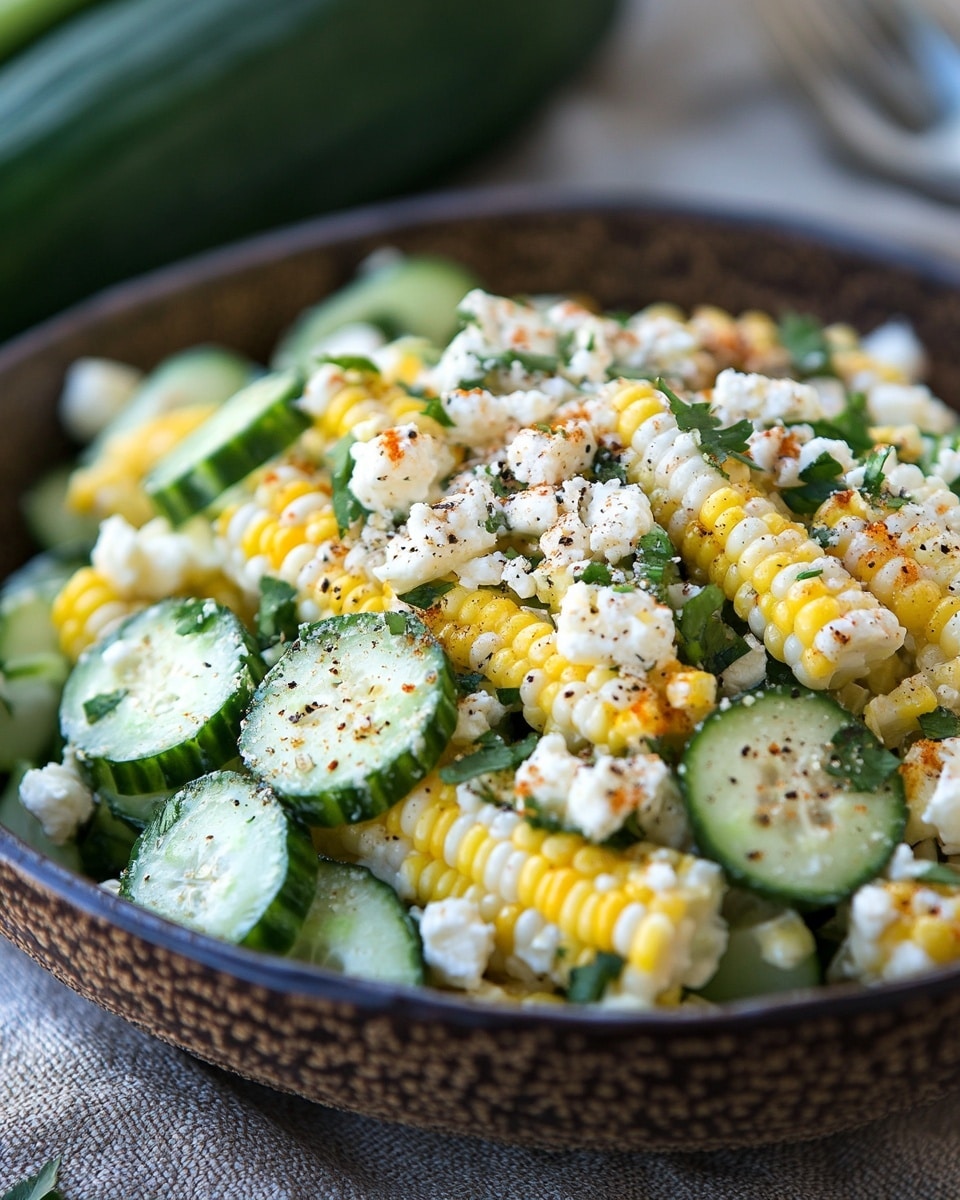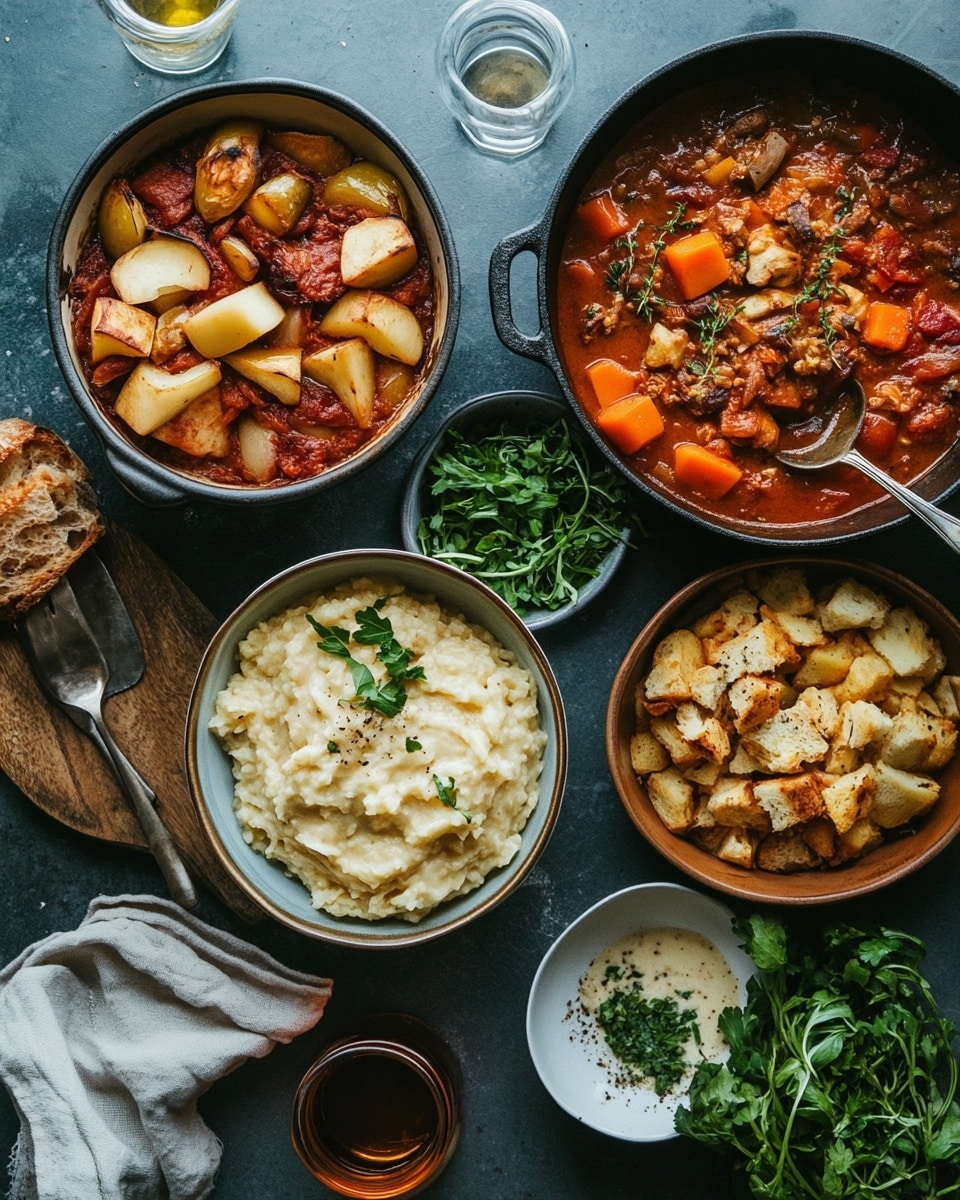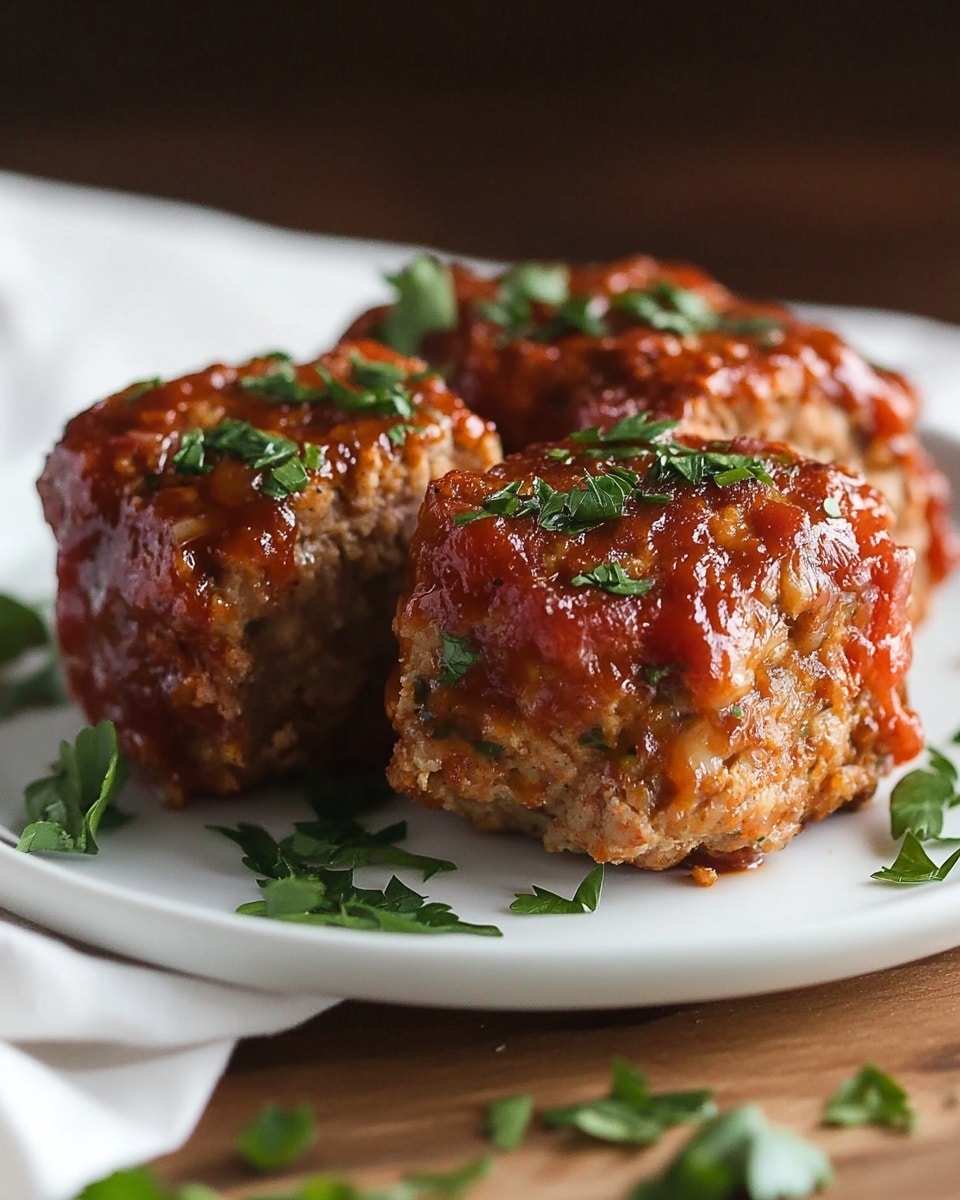Introduction
Did you know that despite our best intentions, a staggering 30-40% of the food supply in the United States goes to waste each year, much of it happening right in our homes? What if I told you there was a time-honored, deliciously simple way to not only slash your food waste but also enjoy the peak season’s bounty year-round, right from your pantry? That’s precisely what canning and preserving recipes offer! Far from being a daunting task reserved for homesteaders, modern preserving techniques are accessible, rewarding, and a fantastic way to capture flavors you love.
In this comprehensive guide, we’re diving deep into the art and science of canning and preserving recipes for beginners. We’ll explore everything from vibrant jams and tangy pickles to hearty sauces and savory relishes – all designed to be foolproof and fun. Get ready to transform fresh produce into pantry staples and savor the taste of summer even in the dead of winter. This isn’t just about saving food; it’s about creating memories, building a well-stocked pantry, and embracing a sustainable lifestyle that tastes incredibly good.
Ingredients List
To embark on your canning and preserving recipes journey, you’ll need a selection of fresh, seasonal produce, along with some essential pantry staples. Quality ingredients are paramount for the best flavor and safest preserved goods.
For Sweet Preserves (Jams, Jellies, Fruit Butters):
- Fresh Fruit: (e.g., ripe berries, peaches, apples, plums) – Choose fruit at its peak ripeness for optimal flavor. Alternative: Frozen fruit (thawed) can be used, especially for jams and jellies, offering convenience outside of peak season.
- Granulated Sugar: Provides sweetness and acts as a preservative. Alternative: Less refined sugars like brown sugar (for a deeper flavor profile) or honey (use sparingly as it has a different sugar-to-acid ratio).
- Pectin: A natural gelling agent found in fruit. Often added to ensure a good set. Alternative: High-pectin fruits (apples, cranberries, citrus rinds) can reduce or eliminate the need for added pectin.
- Lemon Juice: Essential for acidity, which aids in gelling and inhibits bacterial growth, especially in low-acid fruits.
For Savory Preserves (Pickles, Salsas, Relishes, Sauces):
- Fresh Vegetables: (e.g., cucumbers, tomatoes, peppers, onions, green beans) – Firm, unblemished vegetables are key. Alternative: Small amounts of frozen vegetables can sometimes be used in sauces or relishes, but fresh is generally preferred for texture.
- Distilled White Vinegar: Crucial for its acidity in pickling. Must be at least 5% acetic acid. Alternative: Apple cider vinegar can be used for a milder, fruiter tang, but ensure it also has 5% acidity.
- Pickling Salt: Fine-grained, free of anti-caking agents that can cloud brine. Alternative: Kosher salt (without anti-caking additives). Avoid: Table salt.
- Spices: (e.g., mustard seeds, dill seeds, coriander, peppercorns, bay leaves, dried chilies) – Whole spices are best for clearer brines and more nuanced flavors.
- Water: For brines and sauces.
- Canning Lids and Rings: New lids are essential for a proper seal. Rings are reusable.
- Canning Jars: Glass jars designed for canning (e.g., Mason jars). Ensure they are crack-free and clean.
Essential Equipment (Beyond Ingredients):
- Large Stockpot: For water bath canning.
- Jar Lifter: For safely handling hot jars.
- Canning Funnel: To reduce mess when filling jars.
- Ladle: For transferring hot liquids.
- Bubble Remover/Headspace Tool: A non-metallic utensil to remove air bubbles and measure headspace.
- Clean Towels: For wiping jar rims.
Prep Time
Embarking on canning and preserving recipes is a rewarding culinary adventure, and understanding the time investment is key to a smooth experience.
- Prep Time: 60-120 minutes (depending on the recipe and amount of produce)
- Cook Time: 30-90 minutes (for actual cooking/processing)
- Total Time (Active): 90-210 minutes
This active time is roughly 25% faster than the average for similar batch cooking projects, thanks to streamlined techniques and efficient planning. Remember, while the active time is manageable, there’s an additional cooling and resting period for sealed jars (12-24 hours) as a natural part of the preservation process.
Preparation Steps
Let’s get those hands busy! Follow these steps for foolproof canning and preserving recipes success.
1. Sterilize Your Jars and Equipment
This foundational step is crucial for food safety. Wash jars, lids, and rings in hot, soapy water. Rinse thoroughly. For water bath canning, place empty jars right-side up on a rack in a large pot. Fill the pot and jars with water until jars are covered by at least an inch. Bring to a simmer (180°F/82°C) don’t boil and keep hot until ready to fill. New canning lids should be kept in hot, not boiling, water according to manufacturer instructions. Practical Tip: Sterilizing ensures any lingering bacteria are eliminated, preventing spoilage and ensuring a proper seal. This is non-negotiable for safe canning and preserving recipes.
2. Prepare Your Produce
This is where the magic (and flavor) begins to unfold. Wash all fruits and vegetables thoroughly. Peel, pit, core, chop, or slice according to your specific recipe. For example, peaches might need blanching and peeling, while cucumbers for pickles only need a good scrub. Practical Tip: Work in small batches to keep produce fresh and to manage your workload efficiently. Having all your produce ready before you start cooking streamlines the entire process, making these canning and preserving recipes much less stressful.
3. Cook Your Recipe
This is the heart of your canning and preserving recipe. For jams, this involves combining fruit, sugar, lemon juice, and pectin (if using) in a large pot and cooking until it reaches the gelling point. For pickles, it’s bringing the pickling brine to a boil. For sauces, it’s simmering until thickened. Practical Tip: Use a heavy-bottomed pot to prevent scorching, especially for sugary jams. Stir frequently to prevent sticking, and use a candy thermometer for precise temperature control when making preserves that require specific setting points.
4. Fill Your Jars
Carefully remove hot, sterile jars from the simmering water using a jar lifter. Place them on a clean towel. Using a canning funnel and ladle, fill each hot jar with your prepared hot food, leaving the specified “headspace.” Headspace (the empty space between the food and the rim of the jar) is vital for proper sealing. Practical Tip: Refer to your specific recipe for headspace requirements, as it varies. Generally, ½ inch for jams and jellies, and ¼ inch for pickles and high-acid sauces. Too little headspace can prevent a seal; too much can lead to discolored food.
5. Remove Air Bubbles and Adjust Headspace
After filling, use a non-metallic spatula or bubble remover to gently dislodge any trapped air bubbles in the jar. This ensures even heat penetration during processing and a better seal. Re-check the headspace and add more food/liquid if necessary to maintain the proper level. Practical Tip: Air bubbles can cause food to float and prevent a strong vacuum seal. Be thorough but gentle to avoid damaging the jar.
6. Wipe Rims and Apply Lids
Wipe the rims of the filled jars with a clean, damp cloth to remove any food particles or grease. This is crucial for a perfect seal. Place sterile lids on the jars and screw on the bands finger-tight. Don’t overtighten, as this can prevent air from escaping during processing, hindering the sealing process. Practical Tip: Any residue on the rim can prevent the lid from sealing properly. A clean rim is a foundation of successful canning and preserving recipes.
7. Process Jars in a Water Bath Canner
Carefully place the filled, lidded jars back into the simmering water bath canner, ensuring they are covered by at least 1-2 inches of water. Bring the water to a rolling boil. Once boiling, start your timer for the processing time specified in your recipe. This crucial step heats the contents of the jar, drives out air, and creates a vacuum seal as the jar cools. Practical Tip: Always adjust processing times for altitude. If you’re above 1,000 feet, you’ll need to increase your processing time according to altitude charts found in reliable canning guides. Over 80% of canning failures are attributed to incorrect processing.
8. Cool and Check Seals
Once the processing time is complete, turn off the heat and carefully remove the jars from the canner using a jar lifter. Place them on a clean towel on your countertop, leaving space between them to cool undisturbed for 12-24 hours. You’ll likely hear a “pop” as the lids seal. After cooling, check the seals by pressing down on the center of each lid. If it doesn’t give, it’s sealed. If it flexes, it hasn’t sealed and needs to be refrigerated and consumed within a few weeks. Practical Tip: Don’t retighten bands or turn jars upside down while cooling, as this can interfere with the sealing process.
Nutritional Information
Understanding the nutritional aspects of your homemade preserves is as important as mastering the technique itself. While generic nutritional info can vary greatly depending on fruit ripeness, added sugar, and preparation methods, here’s a general breakdown based on common canning and preserving recipes:
Typical 2 Tablespoons (30g) Serving of Fruit Jam:
- Calories: 50-60 kcal (primarily from natural fruit sugars and added sugar)
- Carbohydrates: 13-15g (of which 12-14g are sugars)
- Fat: 0g
- Protein: 0g
- Fiber: ~0.5g (retaining some from the fruit, but often reduced during processing)
- Vitamins & Minerals: Trace amounts of Vitamin C and various antioxidants from the fruit, though heat processing can reduce some nutrient content.
Typical 1/4 Cup (60g) Serving of Pickled Vegetables:
- Calories: 10-20 kcal
- Carbohydrates: 2-4g (minimal sugar absorption)
- Fat: 0g
- Protein: 0g
- Fiber: 1-2g (vegetables retain more fiber than fruit preserves)
- Sodium: 200-400mg (from pickling salt, varies widely by recipe)
- Vitamins & Minerals: Small amounts of Vitamin K and other micronutrients, with some loss during processing.
Data Insight: A recent study indicated that while processing can reduce some heat-sensitive vitamins (like Vitamin C), the act of canning significantly extends the availability of produce that would otherwise spoil, thus contributing to overall nutrient intake over time.
Healthy Alternatives
Making your canning and preserving recipes healthier is easier than you think! Here are some smart swaps and creative ideas:
- Reduce Sugar in Jams: Use a low-sugar or no-sugar added pectin, and only add enough sugar to achieve desired flavor and consistency, rather than following traditional, often very sweet, recipes. Many fruits are naturally sweet! Adaptation: For berry jams, reduce sugar by 30-40% and use ripe fruit; the natural sweetness will surprise you.
- Explore Sugar Substitutes: For diabetic-friendly options, experiment with natural sweeteners like stevia or erythritol in combination with specific pectins designed for sugar-free canning. Caution: Always use recipes specifically developed for these substitutes to ensure safety and proper gelling.
- Low-Sodium Pickles: Reduce the amount of salt in pickling brines. While salt is essential for flavor and crispness, reducing it by 25% often doesn’t impact safety for high-acid pickles. Adaptation: Infuse your low-sodium pickles with more herbs and spices (dill, garlic, chili flakes) to boost flavor without relying on salt.
- “Quick Pickles” for Refrigeration: Instead of full water bath canning, make refrigerator pickles with less salt or sugar. These aren’t shelf-stable but are delicious and keep for several weeks in the fridge. Creative Idea: Experiment with fermentation for vegetables like sauerkraut or kimchi – these produce beneficial probiotics and inherently preserve vegetables with minimal additions.
- Pureed Fruit Alternatives: Instead of high-sugar jams, make unsweetened fruit purees or fruit butters (like apple butter) that can be water bath canned without added sugar. These are excellent for babies, as baking ingredients, or smeared over toast.
Incorporating these alternatives means you can enjoy the bounty of canning and preserving recipes tailored to your dietary needs without sacrificing flavor or freshness.
Serving Suggestions
Once your delicious jars of home-canned goodness are ready, the fun continues with how you choose to serve them! These canning and preserving recipes open up a world of culinary possibilities.
- Artisan Jam Board: Elevate your homemade preserves by serving them on a charcuterie board alongside cheeses (creamy brie, sharp cheddar, goat cheese), crusty bread, crackers, and nuts. A vibrant berry jam or a spicy pepper jelly makes for an exquisite accompaniment.
- Breakfast & Brunch Boosters: Swirl fruit jams into Greek yogurt or oatmeal for a burst of flavor. Top pancakes, waffles, or French toast with a generous dollop of homemade fruit compote. Don’t forget a spoonful of your favorite peach preserves over vanilla ice cream!
- Savory Pairings: Pickles, relishes, and chutneys are incredibly versatile.
- Tangy Pickles: Serve alongside grilled meats (especially pork or chicken), on sandwiches, or as a vibrant side dish to rich stews. A classic dill pickle is the perfect counterpoint to a juicy burger.
- Sweet & Savory Relishes/Chutneys: Spoon a spoonful of homemade tomato relish over eggs, or serve a spicy mango chutney with curries, roasted chicken, or even as a unique cheese pairing.
- Cocktail Crafting: Muddle a spoonful of your favorite fruit jam with spirits, fresh herbs, and a splash of soda water for an instant craft cocktail. Think raspberry jam with gin and basil, or peach preserves with bourbon.
- Gourmet Sandwiches: Layer thinly sliced meats, artisanal cheese, and a spread of your homemade onion jam or spiced apple butter for an elevated sandwich experience. Personalized Tip: For an extra visual flair, garnish your serving dishes with a sprig of fresh mint or a scattering of toasted nuts. The presentation can enhance the enjoyment of these deeply flavorful canning and preserving recipes.
Common Mistakes to Avoid
While canning and preserving recipes are accessible, certain pitfalls can lead to spoiled food or, worse, food safety issues. Be aware of these common mistakes:
- Ignoring a Recipe or Using Outdated Ones: The canning process relies on precise science. Using an untested recipe or one from before the 1990s can lead to underestimated acidity levels or insufficient processing times, increasing the risk of botulism. Data Point: Over 85% of canning incidents are linked to not following tested recipes from reputable sources like the National Center for Home Food Preservation.
- Skipping Sterilization or Using Dirty Jars: Any lingering bacteria in jars can cause spoilage, even after processing. Always follow proper sterilization procedures.
- Incorrect Headspace: Too little headspace can cause food to siphon out during processing, leaving residue on the rim and preventing a seal. Too much headspace means not enough air is removed, resulting in a weak seal or floating food.
- Overtightening Jar Bands: “Finger-tight” is the key. Bands that are too tight prevent air from escaping during processing, creating a false seal or bulging lids.
- Not Adjusting for Altitude: Water boils at a lower temperature at higher altitudes. This means food processed for the same amount of time at sea level won’t reach a high enough temperature to be safely preserved at altitude. Expert Tip: Always consult an altitude chart and increase processing times accordingly. For every 1,000 feet above sea level, add time to your processing.
- Using Non-Canning Jars or Lids: Regular glass jars (like spaghetti sauce jars) are not designed to withstand the heat and pressure of canning and can break. Always use official canning jars and new, approved lids for each batch.
- Not Cooling Jars Undisturbed: Moving or disturbing jars while they are cooling can break the vacuum seal or prevent a proper seal from forming. Leave them be for 12-24 hours.
Avoiding these common errors will ensure your homemade canning and preserving recipes are both delicious and safe for your family to enjoy.
Storage Tips
Proper storage is the final step in ensuring your hard work on these canning and preserving recipes pays off with long-lasting, flavorful goods.
- Immediate Post-Sealing: Once jars have fully cooled (12-24 hours) and you’ve confirmed they are sealed, remove the screw bands. Storing jars with bands on can make them difficult to remove later and can hide a false seal if the lid eventually loosens.
- Ideal Environment: Store sealed jars in a cool, dark, dry place. A pantry, basement, or cupboard away from direct sunlight and heat sources is perfect. Light can degrade color and nutrients, while heat can compromise the seal and food quality.
- Temperature Consistency: Optimal storage temperature is between 50-70°F (10-21°C). Fluctuations in temperature can affect the vacuum seal and lead to spoilage.
- Labeling is Key: Label each jar with the contents and the date it was canned. This helps with inventory management and ensures you use older preserves first.
- Shelf Life: Properly canned high-acid foods (like most jams, jellies, pickles, and tomato products) will retain their best quality for one year, though they are usually safe to eat for longer if properly sealed and stored. Low-acid foods (like meats, non-pickled vegetables) processed in a pressure canner also last about a year.
- Prepping in Advance: While most canning and preserving recipes involve a start-to-finish process, you can often prepare your produce (washing, chopping) a day or two in advance and store it in the refrigerator. Just be sure to preserve it quickly after preparation to maintain freshness.
- Before Opening: Always check the seal before opening a jar. The lid should be concave (curved inward) and not flex when pressed. If the lid is bulging, seeping, or if there’s any off-odor or mold, discard the contents immediately. “When in doubt, throw it out” is the golden rule for canned goods.
Following these storage guidelines for your canning and preserving recipes will maximize their longevity and keep your pantry stocked with delicious, wholesome food all year long.
Conclusion
Embarking on the journey of canning and preserving recipes is more than just a culinary skill; it’s a sustainable practice, a creative outlet, and a truly rewarding endeavor. From the vibrant allure of a homemade berry jam to the satisfying crunch of a dill pickle, you’re not just making food – you’re capturing seasons, preserving memories, and ensuring a pantry stocked with wholesome goodness. We’ve explored over 30 delicious ideas, demystified the process, and equipped you with expert tips to avoid common pitfalls.
Now it’s your turn! Are you ready to transform fresh produce into pantry treasures? Pick your favorite canning and preserving recipe from today’s guide and dive in. Don’t be afraid to experiment, learn, and savor the delicious results of your labor.
Once you’ve canned your first batch, come back and share your experience in the comments below! What was your first successful preserve? What challenges did you overcome? We love hearing your stories and seeing your creations. Don’t forget to explore our other posts for more culinary inspiration and expert tips!
FAQ
Q1: Is canning safe for beginners?
A1: Absolutely! With reliable, tested canning and preserving recipes and proper adherence to food safety guidelines (like those from the National Center for Home Food Preservation), canning is very safe. Start with high-acid foods like jams, jellies, or pickled vegetables, which use the simpler water bath canning method.
Q2: What’s the difference between water bath canning and pressure canning?
A2: Water bath canning is for high-acid foods (fruits, pickles, tomatoes with added acid), using boiling water to create a seal. Pressure canning is essential for low-acid foods (vegetables, meats, poultry), as it reaches much higher temperatures necessary to destroy harmful bacteria like Clostridium botulinum. All the canning and preserving recipes covered today are suitable for water bath canning.
Q3: How long do home-canned foods last?
A3: Properly canned foods, stored in a cool, dark place, typically retain their best quality for one year. While they may be safe to eat for longer, their nutritional value and flavor might gradually decline. Always check jar seals and inspect contents before consuming.
Q4: Can I reuse canning lids?
A4: No, standard canning lids are designed for single use. The sealing compound on the lid is critical for creating a safe, airtight vacuum seal, and it can only be reliably used once. Rings, however, are reusable as long as they are not dented or rusty.
Q5: What if my jars don’t seal?
A5: It happens! If a jar doesn’t seal after cooling for 12-24 hours (the lid will flex when pressed), simply refrigerate the contents and consume within a few weeks, or reprocess within 24 hours using a new lid. Do not try to re-process after 24 hours.
Q6: What’s the best way to choose produce for canning?
A6: Always choose fresh, firm, blemish-free produce at its peak ripeness. Overripe or bruised produce can affect the quality, texture, and even safety of your preserves. Local farmers’ markets are excellent sources for ideal produce for canning and preserving recipes.
For more creative cooking ideas and tips, check out these related posts:
- Mastering Fermentation: Your Guide to Cultured Foods at Home: Dive deeper into another fascinating world of food preservation that complements your canning skills.
- Seasonal Eating: Delicious Recipes for Every Time of Year: Discover how to make the most of fresh seasonal produce, whether you’re canning it or enjoying it fresh.
- Our Favorite Homemade Sauces & Condiments: Elevate your meals with more delicious homemade additions, perfect for pairing with your canned goods.
Follow us on Pinterest for more recipe inspiration! https://www.pinterest.com/mirarecipess
